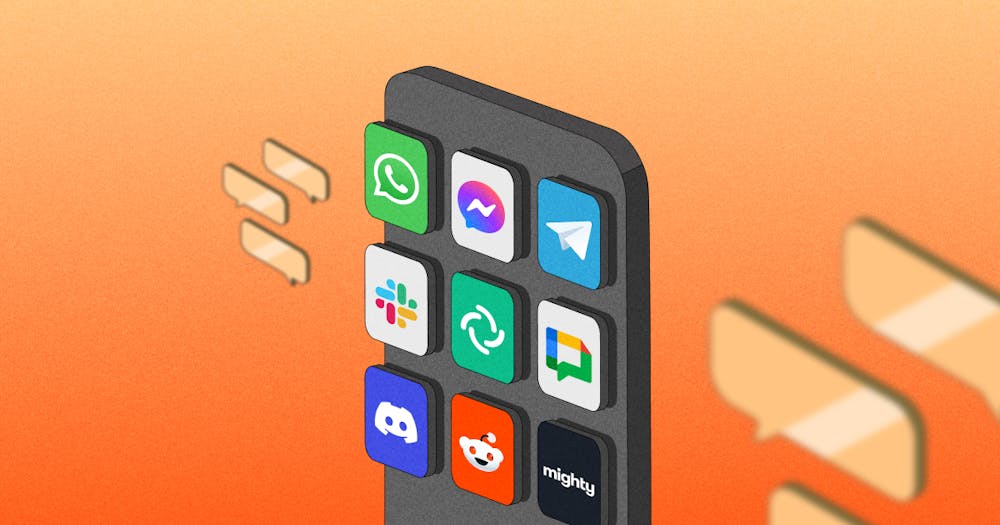Increase app engagement with these 12 strategies

There are over 3.5 million Android apps in the Google Play Store, 2.2 million iOS apps in the Apple App Store, and 480,000 apps in the Amazon Appstore. The average 30-day retention rate for these apps is 5.7%.
That’s a 94.3% churn rate.
It’s challenging to stand out from your competition and drive app downloads. But user acquisition is just the beginning. So how do you turn a first-time user into a raving fan?
In this blog, we'll explore how to increase app engagement with 14 examples of successful strategies.
You'll learn proven tactics on how to create a mobile app engagement strategy that retains users, generates revenue, and improves customer lifetime value by keeping users coming back.
Why is increasing app engagement important?
App engagement refers to any interaction between a user and a mobile app. Typically, the more time users spend in your app, the more content they consume, the more screens they interact with — the more engaged they are.
Engaged app users tend to spend more time and money on your products and services. They also generate more data and feedback, helping you inform product development, in-app personalization, or your app marketing strategy.
For example, engaged customers in the retail banking industry contribute 37% more revenue than those who don’t actively engage with their bank. Meanwhile, brands with highly-engaged customers are 2.2X more likely to increase their market share.

User engagement for mobile apps can take many shapes — such as completing an onboarding tutorial, making an in-app purchase, or simply exploring your app’s content.
You can track mobile app engagement metrics like total users, daily active users (DAU), monthly active users (MAU), average session length, conversion rates, and more to measure your app's engagement potential, or stickiness.

Elevate in-app engagement eBook
12 mobile app engagement strategies for growth
Keeping users engaged is no easy feat. New competitors enter the market every day while expectations for digital experiences are fast-evolving.
Here are the latest mobile app engagement strategies proven for creating a sticky user experience:
1. Design an efficient app onboarding flow
If new users can’t figure out how to use your app to achieve their goals, they won’t return.
Design an intuitive onboarding process that creates a positive first impression, and reduces the barriers to using and benefiting from your app's key features.
You can simplify onboarding in a few ways:
- Reducing the steps to create an account
- Gradually introducing features in the context of the user flow
- Teaching through action so users learn how to interact with the app
AI chatbots are an example of a modern feature that can simplify app onboarding by guiding users to success. You learn more here about what is an AI chatbot?
You might also check out successful examples of app onboarding.
2. Use push notifications strategically
Push notifications allow you to provide helpful information, share updates, and stay top of mind even when users don’t have your app opened. Personalized push notifications can help lower app abandonment rates from 25% to 19%.
Besides sharing updates and content, you can use push notifications to deliver a personalized app experience, such as promoting deals on products that customers recently looked at, offering discounts on users’ birthdays, re-engaging inactive users, encouraging users to sign up for a customer loyalty program, or driving traffic to a nearby store.

3. Encourage users to try features
Users may not have the chance to explore all of your app’s functionalities right out of the gate. By highlighting your top features in your app store description, welcome screens, and onboarding sequence, you can entice users to stay and try features they might miss.
You can use in-app notifications to guide users through your functionality and encourage feature use with bite-size, contextual tips in the moment.
The benefit of in-app notifications is that they can suggest new features to users without crowding the UI with instructional text.
4. Send personalized in-app notifications
In-app notifications (messages) allow you to engage individual users as they're interacting with your app’s content and features. For example, they can suggest features or guide onboarding in the moment, helping to increase engagement and conversions.
Personalized in-app notifications are even more effective than generic in-app notifications, improving app retention rates from 61% to 74% within 28 days compared to the 49% user retention rate of generic in-app messaging. With in-app messaging software, you can set triggers to deliver timely and tailored experiences to users (e.g. product or feature recommendations) to increase app retention and engagement.
5. Gamify the app experience
You can increase app users’ engagement by letting them compete against themselves, their friends, and other app users. App gamification helps users stay consistent with your core features, whether that's exercising, saving money, interactive learning, etc. When users achieve results in your app, they’re more likely to come back and tell others about it.
Create an appealing scoreboard with graphs and charts to help users visualize their progress, highlight recent achievements, and encourage them to explore the app’s features. When the user has completed a challenge or achieved an objective, encourage them to share the accomplishment with their social network.
6. Build relationships with two-way communication
In-app messaging allows you to provide real-time assistance when and where customers need it to troubleshoot issues, answer questions, address concerns, and complete transactions. The timely interactions can minimize frustrating experiences that may prevent users from returning to your app.
You can also reach out proactively through in-app chat to build relationships through one-on-one conversations, point users to relevant features or content, and gather feedback to inform new feature development.
7. Use emails and social media to drive engagement
Email and social media retargeting are effective channels for engaging with users outside your app. For instance, you can send a series of onboarding emails to encourage them to try your most popular features and stay top of mind by engaging them on their social media feed.
Use data analytics to identify users most likely to churn and send targeted content and offers to re-engage with them. You can also use emails to highlight specific features based on profile information or user behaviors.
Include a call-to-action (CTA) in your emails and use deep linking to direct users to the most relevant section of the app (instead of the home screen) to remove as much friction along the user journey as possible.
8. Add a social component
Social interactions with other users are essential for keeping users engaged with an app. An in-app community can help you increase user retention by 2.7x. No wonder social+ is gaining massive momentum through social+ gaming, finance, payment, and more.
Create a section in your app where users can have intimate conversations with their friends or interact with the larger community. Include chat, voice, and video functions to enrich the experience and implement content moderation capabilities to create a safe space while delivering an on-brand experience.
9. Deploy an omnichannel marketing experience
Omnichannel marketing is about delivering a consistent customer experience across all channels and customer touchpoints. The goal is to build complete user engagement by providing support, products, and services through websites, mobile apps, SMS, social media, email, live chat, and physical locations like kiosks and stores.
Consistency and timeliness across channels are key to building trust. All channels must collaborate seamlessly to deliver a consistent brand voice and personalized support. To achieve this, you must understand your customers' journey and identify their preferred channels at each stage.
Set KPIs to measure user engagement both within a channel and across channels. Ensure your team knows the KPIs and allocates resources accordingly based on which channels are most effective in reaching your target audience.
10. Focus on your value prop from the beginning
You only get one chance to make a first impression.
Your value proposition is the first thing users will see when they encounter your brand. Grabbing their attention is vital by showing them how your app will help them solve a problem, save time, or improve their lives.
Your mobile engagement strategy starts with your value proposition. Make your value prop clear and straightforward, and ensure your installation and onboarding experience reinforces the message at every journey step.
Offer tangible value by meeting your customers’ greatest needs with the right solution. For example, KAVECON, one of Korea’s most popular (and fastest-growing) streaming platforms, needed a way to engage with their customers and enable them to engage with each other during virtual concerts. They partnered with Sendbird to provide seamless real-time interactions that delighted their users and supported their rapid business growth.
11. Figure out your retention plan before you have customers to retain
You’d never launch a business without a plan. App engagement is no different. Without a plan, you’ll never know how to increase users in your app. Think about how to attract, convert, engage, and retain customers well before you start and build a product engagement strategy.
An excellent place to start is figuring out your customer personas and mapping out your user journey. Understanding your user journey will help you identify the right marketing channels, key touchpoints, and potential obstacles to growth.
You can use this information to design and refine your marketing and engagement tactics with modern in-app engagement tools that help maximize long-term user retention.
12. Ask for feedback
One of the best ways to increase app engagement (and re-engagement) is to ask customers what they like and dislike about your app, and what improvements they want to see.
One way to collect feedback is to build in a socially engaged community where users can interact with your brand and each other.
You can also gather in-app user feedback by incorporating surveys into your customer support process to gauge customer satisfaction and identify areas for improvement. In-app messaging and in-app chat are also good channels for users to ask questions or raise concerns.
Gathering feedback is half the battle. It’s also essential to act on the feedback you receive by replying to users, regularly updating your app with new features or bug fixes, and playing a proactive role in social communities.

How does your mobile engagement score stack up?
App engagement: It’s all about the user
Market conditions change by the minute, and your app engagement strategies must adapt to the latest consumer expectations by putting your customers front and center.
What do your users want? Asking for feedback, analyzing behavioral data, and mobile app KPIs can provide insights that guide app development and help optimize the app experience to be more valuable, meaningful, and engaging.
For many apps, adding a social layer has proven to be a winning strategy to increasing app engagement, since an online community offers a sustainable way to engage users, identify issues, and improve the app experience with ready access to user feedback.
Likewise, in-app chat and in-app notification functionality helps to increase app engagement by adding a social component to your app. These channels are often used for customer service, marketing, or transactional notifications.
With Sendbird, you can add a chat and community component to your mobile app through our robust API integration, so you don’t have to reinvent the wheel.
If you want to start increasing app engagement, Sendbird offers developer-friendly APIs for in-app communications that can help boost engagement. You can build them all for free if you sign up for a 30 day free trial of Sendbird.











